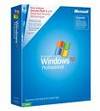Trial Tactics at the Microsoft Trial
The Seattle PI reports that plaintiff’s attorney Roxanne Conlin started presenting the class action case against Microsoft by showing the jury a 1998 deposition video of CEO Bill Gates taken by a Department of Justice lawyer in an earlier lawsuit against Microsoft. The article reports she plans to show all ten hours of the video to the jury because Gates made a poor impression during his deposition.
Usually, showing video testimony to a jury for any length of time bores them to death. Whether one should show ten hours, as the opening evidence in the case is a questionable issue. When David Bois presented his case in another Microsoft lawsuit, he choose to show Gate’s video in segments, breaking up the showing. It’s generally agreed that "talking head" videos of witness testimony become boring very quickly. Even when exhibits and other interest  catching devices are used, jurors have been shown to lose interest in video testimony in a very short time. It’s difficult to maintain juror concentration and we all know it is a rare video that remains of interest for more then a few minutes. Lawyers are by their nature boring people especially when taking discovery depositions. With all the usual pauses while lawyers shuffle through papers for the next question and all the seemingly irrelevant questions which have no point, other then seeking information, the video generally puts the jury to sleep quickly. In addition, the paper reports Gates will be called as a witness to testify in person, so one tactic would have been to show excerpts at the start of trial and save others for use during his examination if that were an available option to the plaintiff. However attorney Conlin is one of the best trial lawyers in the country, so we must assume she has thought this out carefully and has made the right choice. It will be interesting to find out if this was a good tactical decision or not.
catching devices are used, jurors have been shown to lose interest in video testimony in a very short time. It’s difficult to maintain juror concentration and we all know it is a rare video that remains of interest for more then a few minutes. Lawyers are by their nature boring people especially when taking discovery depositions. With all the usual pauses while lawyers shuffle through papers for the next question and all the seemingly irrelevant questions which have no point, other then seeking information, the video generally puts the jury to sleep quickly. In addition, the paper reports Gates will be called as a witness to testify in person, so one tactic would have been to show excerpts at the start of trial and save others for use during his examination if that were an available option to the plaintiff. However attorney Conlin is one of the best trial lawyers in the country, so we must assume she has thought this out carefully and has made the right choice. It will be interesting to find out if this was a good tactical decision or not.
Defense lawyer David Tulchin, in his opening statement, attempted to inoculate the jury against a bad impression of Gates from the video by telling the jury: "The lawyer taking the deposition in asking Mr. Gates questions was indeed himself aggressive, and we think you’ll see that the lawyer was intent on getting under Mr. Gates’ skin. And there were times when Mr. Gates shows his annoyance." He asked the jury not to focus on the interaction between the lawyer and Gates, but rather on the substance of Gates testimony. The difficulty with this approach is that asking someone to ignore impressions people make is just about as effective as asking them not to think about a pink elephant. It just doesn’t work. You can somewhat undermine the jurors normal negative reaction by re-creating, in voir dire, similar life experiences jurors may have had in making a bad impression themselves during their life. Questions eliciting a recollection of a time when the person was provoked into a reaction or was made upset to their later embarrassment can accomplish this. So can questions that paint an image of a deposition as stressful where a normally good person is nervous and apprehensive with lawyers drilling them with questions. Creating mental images which put the juror in the shoes of the person being cross examined in voir dire and through opening statement descriptions of a deposition are helpful. On the other hand, if your client is simply one who creates a negative impression, the task is to acknowledge this up front and not try to sugar coat it. The tactic, in that situation, is to create a word picture, through voir dire discussion and in opening statement, of an otherwise good person who is so dedicated to their company or business they become defensive. The important thing is that the word picture the lawyer creates is consistent with the actual facts in the case and is totally truthful. You can’t conceal the real character and demeanor of a witness who is on the stand for any appreciable time. Furthermore, truth is the most powerful persuasive weapon a trial lawyer possesses.
